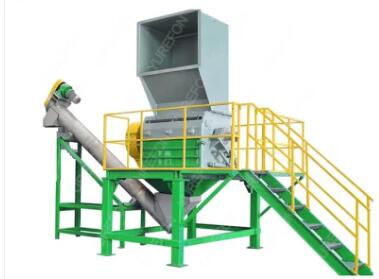What are the key components and mechanisms of plastic machinery
2023-10-30
Plastic machinery consists of various components and mechanisms that work together to process plastic materials and shape them into finished products. These components and mechanisms vary depending on the specific type of plastic machinery and the manufacturing process involved. Here are the key components and mechanisms commonly found in plastic machinery:
1. Hopper: The hopper is a container that stores and feeds raw plastic material, such as pellets or granules, into the machine. It often includes features to prevent material bridging and ensure consistent material flow.
2. Screw or Barrel: The screw is a critical component in many plastic machinery types, especially in injection molding and extrusion machines. It conveys, compacts, melts, and homogenizes the plastic material. The barrel surrounds the screw and provides the heat necessary to melt the plastic.
3. Heating Elements: Electric or resistance heating elements are used to heat the barrel and melt the plastic material. Accurate temperature control is essential for proper material processing.
4. Injection Unit: In injection molding machines, the injection unit includes the barrel, screw, and plunger or reciprocating screw. It is responsible for melting and injecting the plastic material into the mold.
5. Mold or Die: Molds and dies are precision tools used to shape the plastic material into the desired form. Molds are used in injection molding, while dies are used in extrusion and thermoforming.
6. Clamping Unit: Injection molding machines have a clamping unit that secures the mold halves together with hydraulic or mechanical force during the injection process. The clamping unit is essential for maintaining the shape and integrity of the molded parts.
7. Hydraulic System: Many plastic machinery types, especially large machines, use hydraulic systems to control various movements, such as clamping, ejecting, and core-pulling actions.
8. Pneumatic System: Pneumatic systems are used for controlling auxiliary functions, such as opening and closing of mold cores, ejecting finished products, and actuating valves.
9. Control System: The control system, often computerized, manages and monitors all aspects of the plastic machinery, including temperature control, pressure, cycle times, and automation. It may include a human-machine interface (HMI) for user input and feedback.
10. Extruder: In extrusion machinery, the extruder is responsible for pushing the plastic material through a heated barrel to form a continuous shape, such as a profile, sheet, or film.
11. Calibration and Sizing Equipment: In extrusion processes, calibration and sizing equipment shape and cool the extruded plastic into the desired dimensions.
12. Cooling Systems: Plastic machinery may include cooling systems, such as water or air cooling, to rapidly cool and solidify the plastic material after shaping.
13. Cutting and Trimming Mechanisms: Machinery used for producing plastic sheets, films, or profiles often incorporates cutting and trimming mechanisms to create the final product dimensions.
14. Feed and Delivery Systems: These systems handle the transport of plastic material from the hopper to the processing unit and from the processing unit to the mold or die.
15. Sensors and Monitoring Equipment: Sensors and monitoring equipment are used to measure and control various parameters, including temperature, pressure, material flow, and machine status. This ensures precise and consistent processing.
The specific components and mechanisms may vary depending on the type and complexity of the plastic machinery. These components work in unison to process plastic materials and create a wide range of plastic products, from everyday consumer items to complex industrial components.



